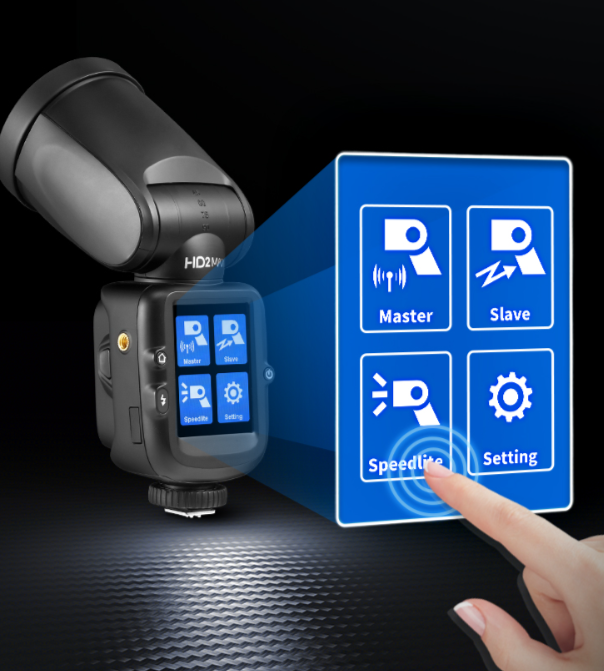
Detachable camera flashes are powerful tools that can greatly enhance the creative potential of your photography. While the built-in flash on your camera can be convenient in certain situations, it often produces harsh and unflattering lighting. By using a detachable flash and taking it off-camera, you open up a world of creative possibilities. In this article, we will explore various off-camera flash techniques that can take your photography to the next level.
- Understanding Off-Camera Flash
Off-camera flash refers to the technique of using a detachable camera flash positioned away from the camera itself. By moving the flash off-camera, you have greater control over the direction, intensity, and quality of the light. This allows you to create more dynamic and visually appealing images.
- Equipment Needed for Off-Camera Flash
To get started with off-camera flash, you will need the following equipment:
a. Detachable Flash: A dedicated detachable flash unit is essential for off-camera flash photography. Look for a flash that offers manual control over power output, as this will give you more flexibility in adjusting the light’s intensity.
b. Flash Trigger: A flash trigger is used to wirelessly fire the flash. It consists of a transmitter that attaches to your camera’s hot shoe and a receiver that attaches to the flash. The trigger allows you to control the flash remotely, ensuring proper synchronization with your camera.
c. Light Stand: A light stand is used to hold the flash in a desired position. Look for a sturdy light stand that can support the weight of the flash and any modifiers you may use.
d. Umbrella or Softbox: To further modify the light, you can use an umbrella or a softbox. These modifiers help to create softer, more diffused lighting. Umbrellas are lightweight and easy to set up, while softboxes produce more directional and controlled light.
e. Reflector: A reflector can be used to bounce and redirect light. It can help fill in shadows and add a natural-looking fill light to your images.
- Off-Camera Flash Techniques
Now that you have the necessary equipment, let’s explore some creative off-camera flash techniques:
a. Rembrandt Lighting:
Rembrandt lighting is a classic portrait lighting technique that creates a triangular highlight on the subject’s cheek. To achieve this look, position the flash at a 45-degree angle to the subject, slightly higher than eye level. This creates a small triangle of light on the opposite cheek, adding depth and dimension to the portrait.
b. Split Lighting:
Split lighting involves positioning the flash directly to the side of the subject, illuminating only one side of their face. This technique creates a strong contrast between light and shadow, resulting in a dramatic, edgy look. It works particularly well for portraits with a moody or mysterious feel.
c. Backlighting:
Backlighting involves positioning the flash behind the subject, facing towards the camera. This creates a halo of light around the subject, separating them from the background and adding a sense of depth. Backlighting works well for creating a sense of drama or emphasizing the outline of your subject.
d. Fill Flash:
Fill flash is used to balance ambient light and fill in shadows. It is particularly useful in situations where the background is brighter than the subject. By using off-camera fill flash, you can ensure that your subject is properly exposed, while still capturing the details and colors in the background.
e. Freezing Motion:
Off-camera flash can help freeze motion in situations where a fast shutter speed alone is not sufficient. By using a short burst of flash, you can freeze the motion of a moving subject, such as a dancer or athlete, while still capturing the ambient light. This technique adds a sense of dynamism and action to your images.
f. Colored Gels:
Colored gels can add a creative and dramatic touch to your off-camera flash photography. Gels are transparent color filters that you can place over your flash to change the color of the light. Experiment with different gel colors to create unique and eye-catching effects. For example, using a blue gel can create a cool and moody atmosphere, while a red gel can add warmth and intensity.
g. Multiple Flash Setups:
Once you are comfortable with using a single off-camera flash, you can explore more advanced techniques using multiple flashes. This allows you to create more complex lighting setups, such as using one flash for the main light, another for fill light, and a third for backlighting. Multiple flash setups provide even more control over the lighting in your images, allowing you to create intricate and visually striking compositions.
- Tips for Off-Camera Flash Photography
To make the most of off-camera flash, consider the following tips:
a. Practice: Off-camera flash photography requires practice and experimentation. Set aside time to practice different techniques and lighting setups. By experimenting, you can develop your own style and understand how different lighting techniques affect the mood and overall look of your images.









